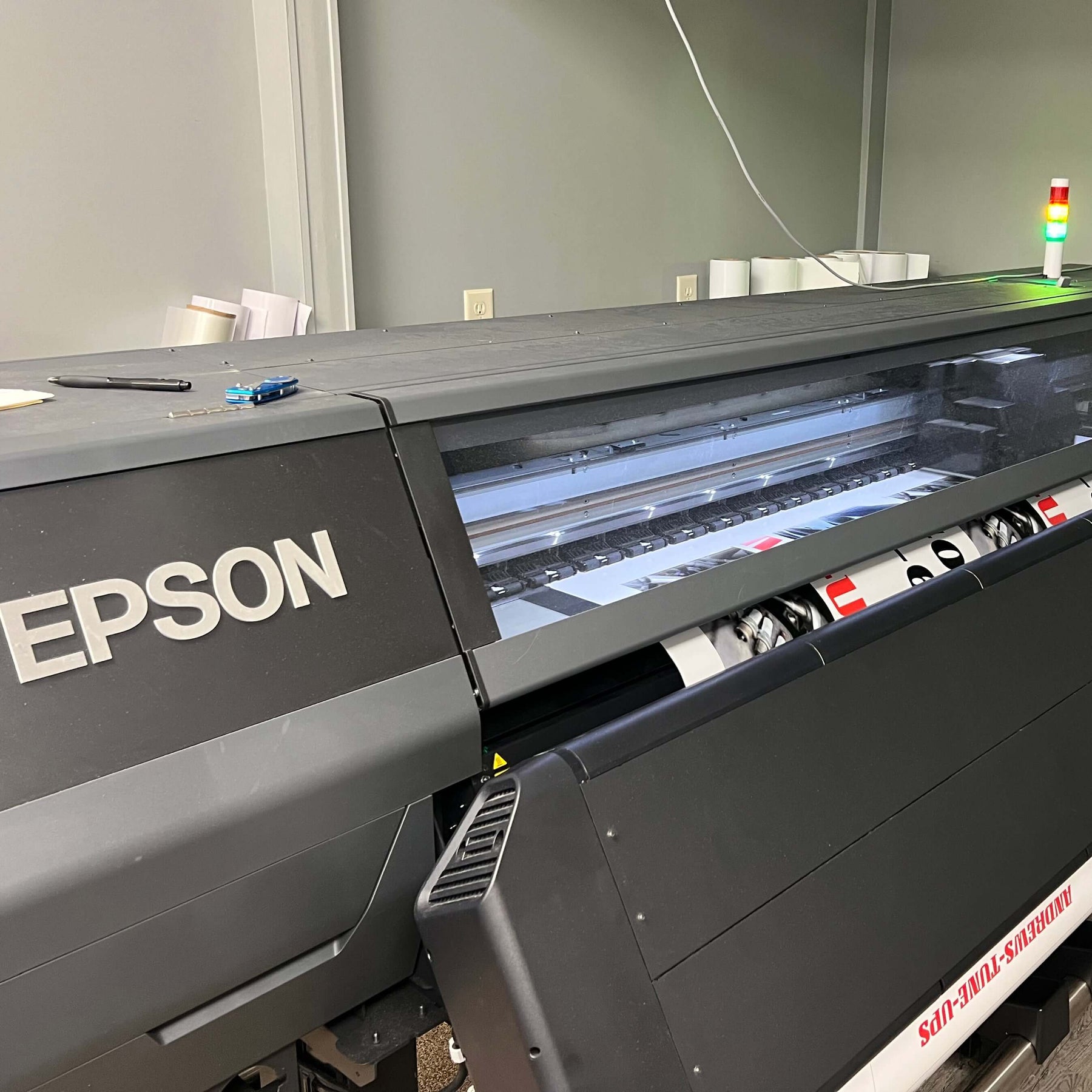
Graphic Design Logo File Types, Explained
When beginning a new company printing project, wether it be magnetic signs for your vehicle, compliance vinyl decals, or any other print project, knowing about file types can be detrimental to the quality of your prints. Below we will cover the difference between a raster and vector image, and the most popular file types used in graphic design; jpg, pdf, .eps, .ai, and psd.
Getting started, we will consider why this information is important to you when beginning your quest for printed goods. Often times we receive very small jpeg files that are saved to load quickly on the web. These files are raster images, that once enlarged, become extremely pixelated. You would not want to upload one of these files that are saved in low resolution to purchase a print and be disappointed when you receive a blurry product. We want you to be happy with your printed products regardless if you purchase magnetic signs from us, or t-shirts from your local shirt shop.
Vector and rasters images are very different in terms of how they are created.
A raster image is made of of tiny squares of different colors arranged in a pattern to make one large image. I am sure you have seen a television when your internet connection is not good. You start to see parts of the screen show up as small squares of color, you can slightly make out the image, but as more color squares start to load on the screen, the image becomes clear. If you only have a raster image and are questioning your file, one way to tell if it will print well is to enlarge it on your screen. Once you start to enlarge it, if you quickly start to see pixels, it is likely that it will be that way when it is enlarged to print it.
On the other hand, a vector file is not made of pixels, but of lines. The lines are the boundaries that define the elements of the design. Vector files are scaleable and can be used to get clean prints at any size. A vector file is editable with specific software, such as Adobe Illustrator. Adobe has a wonderful explanation of these two file differences. If you would like to review these file differences in greater depth, click here.
Now lets dive into the different file types and what they mean to you when beginning your vehicle sign design project.
JPG (aka jpeg) files are poplar and most people are familiar with this file type. They are widely used because they compress the image making it smaller while preserving the image quality. They are a great file type for use on cameras, phones, or for uploading to the web because they are compressed and will load quickly. They can also be saved in high resolution, making them suitable for printing, and scaling, but keep in mind, this file type is not editable. If they are not saved at high resolution, because they are raster images, they do become pixelated (blurry) when enlarged.
PDF (Portable Document Format) file is a file that is shared with ease across many computer platforms. Documents or images are saved as a pdf when they do not require editing. Pdf files are versatile and can be shared, printed, or linked to with ease. They can be a mix of raster and vector art.
PSD (Photoshop files) are usually provided when images are used in the main elements of the design. Photoshop allows the user to use and edit photographs, add text and other design elements to photos. PSD files are normally raster images, but can handle some vector data.
AI (Adobe Illustrator) files are the creme of the crop when it comes to logo design, or graphic design for printing. Ai files are normally scaleable to any size making them perfect for use in sign design, think small fridge magnets to highway billboards and everything in between. Ai files do require special software (Adobe Illustrator) to edit, but most graphic designers and printers will have this software to open your files. Ai files are normally vector files, but can include raster images as well, consider a photograph with text overlays. The photo will be a raster image, but the text will be vectorized.
EPS (Encapsulated PostScript) is the professional standard for producing high-quality vector images, ideal for large-scale printing jobs. It is supported by PostScript printers and image setters, making it easy to create detailed, sharp images for marketing materials, billboards, and posters.
Before you get to concerned, know that we have your back. On staff is a team of graphic artists that are ready to convert your files to a useable vector image at an affordable price. We want your magnetic sign business, but that business is useless if you are unhappy. We will always let you know if you files are acceptable or not, and work with you to get to a resolution that will keep you satisfied and returning. If you have a file you would like us to review, please send it over to our team to review it to make sure the file will print well for your project, or to see if we can convert it to a useable print file for you. If you have a file you would like us to review, text us at 812-653-6055 or email us at info@wholesalemagneticsigns.com.

Leave a comment